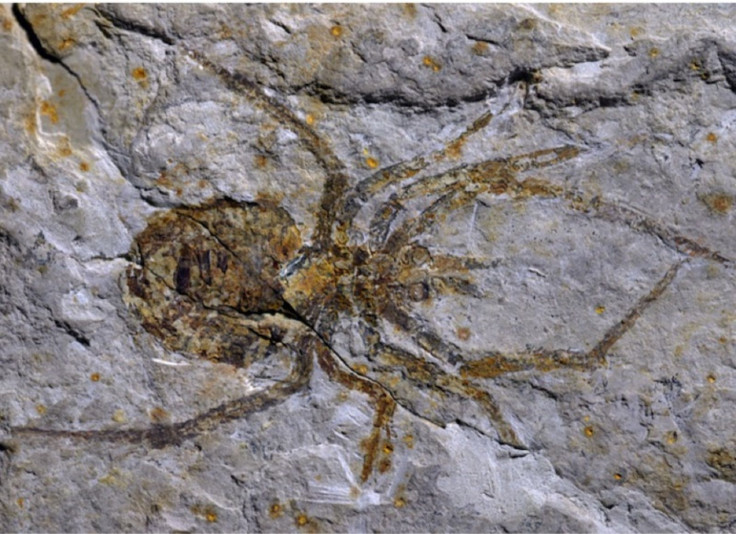Ancient Spider Fossil Discovery A Hoax, Specimen Doctored

KEY POINTS
- Earlier this year, researchers described finding the fossils of a massive ancient spider
- Scientists were skeptical about the find, so they borrowed the fossil and showed it to an expert who specializes in spider fossils
- The team used fluorescence microscopy to take a closer look at the fossil and found traces of the oil-based paint used for the forgery
- The fossil is actually of a common crayfish, not a spider
It was earlier this year when researchers revealed the fossilized remains of a massive ancient spider species unknown to science, but was the fossil really of an ancient spider, or is it something completely different?
Experts in the University of Kansas and China, including the lead author of the original paper describing the supposed spider fossil, sought to find out.
Spider Fossil
The specimen was discovered by fossil hunters in the Lower Cretaceous Yixian Formation and the locals sold it to the scientists at the Dalian Natural History Museum in Liaoning, China. In describing the supposed spider fossil in the peer-reviewed journal Acta Geologica Sinica, scientists gave it the scientific name Mongolarachne chaoyangensis .
However, other scientists in Beijing were suspicious of the fossil because of its strange appearance and because it was massive. Sure enough, when the Beijing scientists borrowed the specimen and showed it to professor of invertebrate paleontology at the University of Kansas, Paul Selden, he immediately realized that the specimen was not of a spider.
“It was missing various parts, had too many segments in its six legs, and huge eyes,” Selden said. “I puzzled and puzzled over it until my colleague in Beijing, Chungkun Shih, said, ‘Well, you know, there's quite a lot of crayfish in this particular locality. Maybe it ’ s one of those.’ So, I realized what happened was I got a very badly preserved crayfish onto which someone had painted on some legs.”
Crayfish, Not Spider
Selden, along with graduate student Matt Downed and associate professor of geology Alison Olcott, used fluorescence microscopy to analyze the original fossil. This allowed them to see which parts of the specimen were actually of the animal, which were bits of the rock, and which parts were possibly doctored.
Unsurprisingly, the team found evidence of bright yellow fluorescence that could indicate the presence of an aliphatic carbon from the oil-based paint used to alter the fossil.
“They obviously picked up this thing and thought, ‘Well, you know, it looks a bit like a spider.’ And so, they thought they'd paint on some legs – but it's done rather skillfully,” Selden said, pertaining to the people, mostly local farmers, who originally found the fossil. “And, of course, the people who described it are perfectly good paleontologists – they're just not experts on spiders. So, they were taken in.”
Fake Fossils
Unfortunately, Selden notes that faking fossils are actually quite commonplace, particularly among fossil hunters who simply need the money. In fact, he said that forgery is common even with dinosaur fossils, which can be very expensive. However, many of these forged fossils end up being bought by tourists.
Selden likened the fossil to the “jackalope,” a creature thought to be the hybrid of a jackrabbit and deer or antelope. Although it is said that the jackalope was merely created by two brothers who were learned in taxidermy, the story spread quickly across the continental United States.
As for the supposed spider fossil, it will likely be stripped of its scientific name and rechristened as a crayfish.
The paper correcting the original find is published in the journal Paleoentomology.
© Copyright IBTimes 2025. All rights reserved.






















